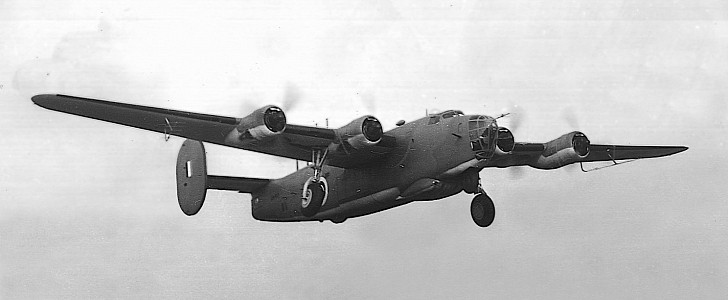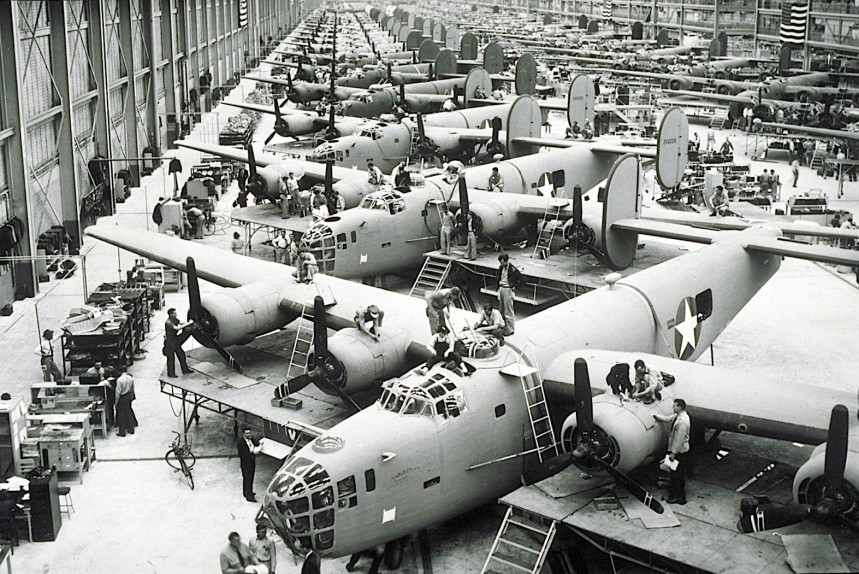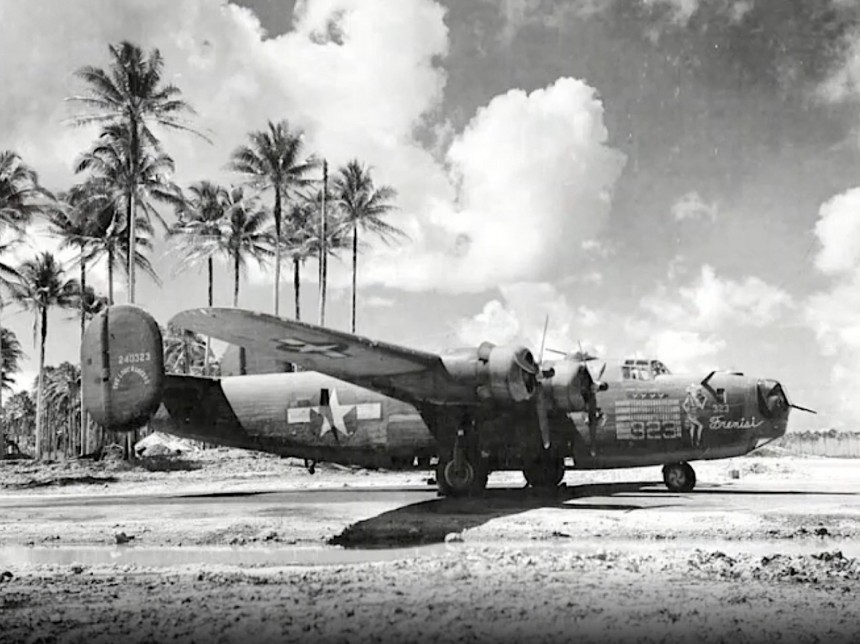She isn’t as pretty or as famous as the B-17, but the B-24 carried more bombs to greater distances and at higher speeds, while excelling at jobs the designers never could have imagined.
The year was 1938, and Boeing was cranking out B-17 Flying Fortresses as fast as possible. A war in Europe was imminent, so the Air Force asked Consolidated to build them under license. The design was already 4 years old, and aerodynamics had improved in the meantime. Coincidentally, the AF also released requirements for a new bomber: 300 mph, for 3,000 miles (4,828 km) range at 35,000 feet (10,668 meters) altitude.
A new wing design was their starting point. The “Davis Wing” is longer and thinner, and mounted high up on the fuselage. This meant the wings had to work harder, as they carried 35 percent more stress (wing loading) than the B-17. Nevertheless, it was strong enough to carry two of the B-17's bomb bays mounted in-line. The trade-off was in altitude, as the B-24 topped out at 25,000 feet (7,620 meters) with a full load of bombs. The B-17 could go higher, but it was 15 mph slower.
Another first was the tricycle landing gear. By incorporating a steerable, retractable nose wheel, takeoff and landings were much less stressful than tail-dragging aircraft. On the opposite end, having twin vertical stabilizers (rudders) offered redundancy, in that the bomber could make it home with one of them shot away.
Power came from four Pratt & Whitney R-1830 Twin Wasp engines. These 30-liter beasts used massive turbos and 14 cylinders to deliver 1,200 horsepower each. Large intercoolers required oval engine cowlings, where active aerodynamics maintained optimal flow for the altitude and temperature.
Being such a big target, it was defended by ten Browning .50 caliber machine guns. They were dual-mounted in turrets on the nose, roof, and underneath in the cramped ball turret. Handling one of the most dangerous jobs in the Air Force, the B-24 could retract the turret inside, a luxury not afforded to crews of other bombers.
The aircraft's first test was in the Atlantic. The limited range of early sub hunters created a gap in coverage where U-boats would lurk. After trading a few bomb racks for extra fuel tanks, the VLR (Very Long Range) model was responsible for 93 confirmed U-boat kills, allowing vital convoys of men and machines to reach Europe.
England and Germany had given up on daylight bombing as their losses mounted, but the Liberator went on the offensive in late 1942. Flying from bases across Southeast England, the 8th Air Force took heavy losses throughout ‘43 and ‘45, with 26,000 Airmen lost and another 28,000 captured. As losses mounted, Henry Ford offered to revolutionize the way bombers were built. The Willow Run assembly plant was transformed into the world’s largest single-story building in less than a year, and at peak output in August of ‘44, they delivered 428 bombers. That’s a new bomber every 63 minutes, for a total run of 8,685.
Thanks to their 6,000-lb (2,721 kg) cargo capacity, they were easily transformed into transports that crossed the Himalayas to support China’s war against Japan. As a tanker, they could haul 2,900 gallons of fuel (11,000 liters) over the roof of the world. Trading tanks for seats offered room for 25 passengers, so Quantas used them on the Perth to Sri Lanka route. It was the Indian Air Force who kept them flying until 1968, proving these rugged ships were well built.
When Japan surrendered, 400 new examples were flown straight to the boneyard. With a production run of 18,482, the B-24 holds records for bomber, heavy bomber, American warplane, and multi-engine aircraft, but only one remains airworthy today.
A new wing design was their starting point. The “Davis Wing” is longer and thinner, and mounted high up on the fuselage. This meant the wings had to work harder, as they carried 35 percent more stress (wing loading) than the B-17. Nevertheless, it was strong enough to carry two of the B-17's bomb bays mounted in-line. The trade-off was in altitude, as the B-24 topped out at 25,000 feet (7,620 meters) with a full load of bombs. The B-17 could go higher, but it was 15 mph slower.
Another first was the tricycle landing gear. By incorporating a steerable, retractable nose wheel, takeoff and landings were much less stressful than tail-dragging aircraft. On the opposite end, having twin vertical stabilizers (rudders) offered redundancy, in that the bomber could make it home with one of them shot away.
Being such a big target, it was defended by ten Browning .50 caliber machine guns. They were dual-mounted in turrets on the nose, roof, and underneath in the cramped ball turret. Handling one of the most dangerous jobs in the Air Force, the B-24 could retract the turret inside, a luxury not afforded to crews of other bombers.
The aircraft's first test was in the Atlantic. The limited range of early sub hunters created a gap in coverage where U-boats would lurk. After trading a few bomb racks for extra fuel tanks, the VLR (Very Long Range) model was responsible for 93 confirmed U-boat kills, allowing vital convoys of men and machines to reach Europe.
Thanks to their 6,000-lb (2,721 kg) cargo capacity, they were easily transformed into transports that crossed the Himalayas to support China’s war against Japan. As a tanker, they could haul 2,900 gallons of fuel (11,000 liters) over the roof of the world. Trading tanks for seats offered room for 25 passengers, so Quantas used them on the Perth to Sri Lanka route. It was the Indian Air Force who kept them flying until 1968, proving these rugged ships were well built.
When Japan surrendered, 400 new examples were flown straight to the boneyard. With a production run of 18,482, the B-24 holds records for bomber, heavy bomber, American warplane, and multi-engine aircraft, but only one remains airworthy today.












